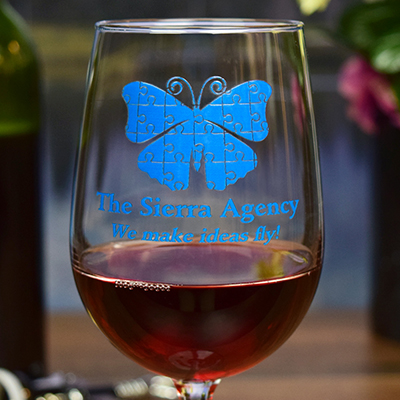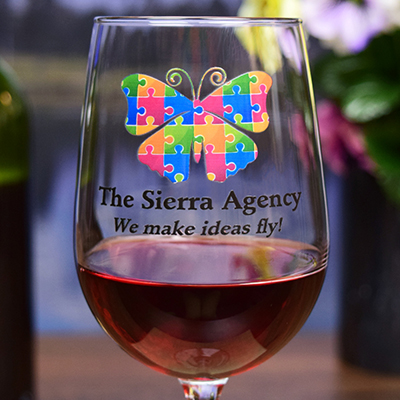The Ultimate Guide to Wine With Fish
The Ultimate Guide to Wine With Fish

Things to remember about fish and other seagoing creatures
It's different under the sea. And not just for the obvious reasons. In the world of gastronomy and grapes, a new set of issues come into play, variables which will influence food and wine pairing decisions. This guide will examine these issues as they relate to both seafood and wines, and provide guidance to selecting the appropriate wine for your favorite seafood.
Seafood Characteristics:
- Mineral Flavors
- Texture
- Oil
- Sweetness
- Cooking
- Sauces
Wines:
- Why sparkling wine
- Effervesence
- Dryness
- Varietal blend
Saltwater and minerals
These impart distinctive flavor qualities to seafood, and to the degree that they are more or less prominent, both will affect your wine pairing decisions.
Consider for a moment, the oyster. These water-dwelling filter feeders take most of their flavor, taste and characteristics from their environment. The key taste is salt or, more accurately, brine, in varying degrees from the extreme to the mild. The primary flavor is mineral, which is derived from the action of the oyster pumping water in and out all day and feeding on plankton and nutrients from the water. Again, some oysters are mild in mineral flavor, while some are significantly stronger.
Texture
Seafood textures can be oily, less oily, meaty, soft, delicate, flaky or resistant. Analyzing the texture of your seafood is important when selecting an appropriate wine to pair with it. Because salmon and oysters have so much variation within their classes in terms of texture, color and flavor, they stand on their own.
| Meaty | Delicate | Flaky | Oily | Resistant | On their own |
| Swordfish Shark Tuna Halibut Haddock Monkfish |
Sole Sand Dabs Scallops Sea Bass Flounder Crab |
Catfish Snapper Cod Ono Redfish Tilapia |
Bluefish Anchovies Mackerel Smelts Trout Sardines |
Mollusks Calamari Octopus Shrimp Lobster Conch |
Salmon Oysters |
Fish Oil
It's the stuff that's good for you - and present in levels varying from strong to mild in most seafood. Fish oil may or may not affect your perception of a fish as strong - even if it is present to a greater degree. Salmon has a great deal of fish oil, but is not considered as "fishy" as say, anchovies. In fact, salmon can be considered somewhat in a class by itself due to its versatility. In general, though, fish with a lot of oil will require a different wine pairing strategy than fish with less.
Sweetness
We've talked a bit about the salty flavor qualities of seafood. But the opposite side of the coin is sweetness. Dungeness crab and Maine lobster are two types of seafood with a sweet quality to the taste. Sweetness, even when it is as subtle as that in shellfish, is always a factor when selecting a wine.
The Raw and the Cooked:
|
Cooking Method |
|
 |
Boiling |
| Poaching | |
| Steaming | |
| Sautéing | |
| Deep Fat Frying | |
| Roasting | |
| Grilling | |
| Smoking | |
With a few notable exceptions, we are seldom required to pair a wine with a nice piece of raw meat. On the other hand, some of the world's most celebrated raw foods come from the sea. Oysters. Clams. Sushi. Sashimi. If your seafood is raw and unadorned, pay attention to saltiness, minerals and texture. If your seafood is raw and dipped in sauce, dabbed in a condiment or minced with other ingredients, pair to the other factors (sauces, condiments or other ingredients).
Preparation and Sauce:
Both cooking methods and sauces will affect your wine selection to lesser or greater degrees. Poaching, steaming or boiling add little flavor. Grilling over a mesquite fire adds a lot. A creamy, buttery sauce adds less flavor (texture becomes an issue here). A horseradish-based cocktail sauce adds a lot. And smoking adds flavor and accentuates salt.
|
Sauces |
|
| Mild/Oily Cream Butter Citrus Tartar Almondine |
|
| Spicy/Oily Romesco Aioli Tartar |
|
| Salty Soy Black Bean Tamari Asian |
|
| Salty/Sweet Southeast Asian Sweet & Sour Hawaiian |
|
| Savory Mediterranean Salsa Caribbean Tomato |
|
| Hot Tabasco Louisiana Blackened Wasabi |
|
| Vinegar Mignonette Pickled Ginger |
|
Think in terms of acidity, as well as ingredients, when you think about sauces and wines. A strong acetic acid as an ingredient, like a wine vinegar will make the sauce more difficult to pair with wine. A weaker acid, like a rice vinegar, or lime, will be easier.
Fresh shellfish doesn't require heavy sauces or toppings. Try serving with just some citrus slices or a mignonette sauce (lots of finely diced shallots floating in wine vinegar with fresh crushed black pepper to taste).
The complex canvas
It's plain that the food from the sea is as varied as the shells on the beach. We know a lot about the different things to look out for - saltiness, minerals, flavors, textures, raw or cooked, preparation and sauces. How do all these work into the food and wine pairing equation?
About wines and food
If there's one food and wine rule everybody knows it's "white wine with fish". But - what sort of white wine? (We will have a word or two about reds in a bit.) For your raw, delicate, or lightest seafood dishes, reach out for a white that's clean, refreshing and tart such as Pinot Grigio, Riesling, Muscadet, Pinot Blanc, Chenin Blanc or a Chardonnay from Northern Italy.
Going a little more flavorful in terms of variety, cooking method and sauce? Consider a somewhat richer, moderately oaked Chardonnay from Burgundy, Chile, Tuscany, the Pacific Northwest, California or Australia. Or a lighter-styled Sauvignon Blanc or Semillon. Or even a varietal blend.
With your biggest, richest, creamiest preparations, you can push the envelope on oak and richness in your Chardonnay, Semillon, Sauvignon Blanc or Viognier. Rosés are always fun to try with seafood, as long as they are on the dry side.
And if you love reds, Pinot Noir, in particular, will greatly compliment more substantial, meatier, earthier preparations. Grilled salmon and Pinot Noir are religion throughout the Pacific Northwest.
The best paintbrush of all.
But if you're determined to find the perfect brush to cover the entire seafood canvas, there is truly no better partner than sparkling wine. Here's why. Stylistically, sparkling wine has all the elements that make a wine food-friendly: little or no oak, lower alcohol, high acidity, dryness.
Oak lends a strong flavor, and can tend to compete with the flavors in a dish. Less oak is simply less problematic when it comes to food and wine pairing across the board. The early harvest for sparkling wine grapes means lower alcohol - and higher acidity. In terms of wine, both of these are required for shellfish and seafood. In particular, the acidity acts as a stunt double for a squeeze of lemon.
But wait - there's more - bubbles!
Effervescence serves several important gastronomic functions. It stimulates the appetite, lifts the palate and cuts cleanly through oil and butter. What's more, as with beer and ale, the bubbles act as a natural fire extinguisher - making sparkling wine a particularly refreshing choice with hot and spicy foods. Needless to say, sparkling wine is festive, fun, and makes any meal a special occasion.
A word about dryness
All sparkling wines start out bone dry. The winemaker decides how sweet the final product will be when he or she determines the level of dosage (a blend of wine and sugar) that is added to sparkling wine after disgorgement (the process by which the yeast residue from aging are removed from the wine).
| Dryness | |||
| Brut | Sec | Demi Sec | Doux |
| Bone Dry | Dry | Semi Dry | Sweet |
For seafood, and in particular raw shellfish such as oysters, the dryer the better. Stronger fish, more flavorful ingredients and cooking methods call for a dry dosage as well - along with more acidity and plenty of effervescence. However, a slightly sweeter dosage served with the right combination - say a piece of Ono with a pineapple salsa - could be sublime.
Our secret blend
| Sparkling Wines | |
|
Blanc de Blancs Brut Prestige Blanc de Noirs DVX Winery Lake Cuvée |
|
Okay, it's not a big secret. All sparkling wines are made from the traditional grapes of Champagne: the whites are Chardonnay and Pinot Gris; the reds are Pinot Noir and Pinot Meunier. In general, sparkling wines with more white grapes in their blends, such as a Blanc de Blancs or Mumm Cuvée Napa's Winery Lake Cuvée, tend to be best suited for more delicate seafood varieties, preparation and ingredients.
Sparkling wines with a healthy portion of Pinot Noir, such as Mumm Cuvée Napa's Brut Prestige or DVX, can stand up to more assertiveness in all the above areas. A sparkling wine such as Blanc de Noirs, which has a slightly sweeter dosage, will pair well with seafood preparations that have a similar underpinning of sweetness in the sauce, such as a sweet and sour or a plum sauce.
In conclusion:
We hope you've enjoyed our exploration into the many wonderful possibilities for pairing seafood and wine, especially sparkling wine. As you embark upon your own adventures, remember: in terms of food and wine, beauty is in the eye (or on the palate) of the beholder. Feel free to experiment with unconventional combinations. Or, stick with the basics. You are the ultimate judge of what you like.
The Tipsy Grape is all about individualized beauty, that's why we let you design your very own personalized wine glasses and personalized champagne flutes. Just like pairing wine with fish, you're sure to find the perfect match with us. Order your personalized glasses today.



